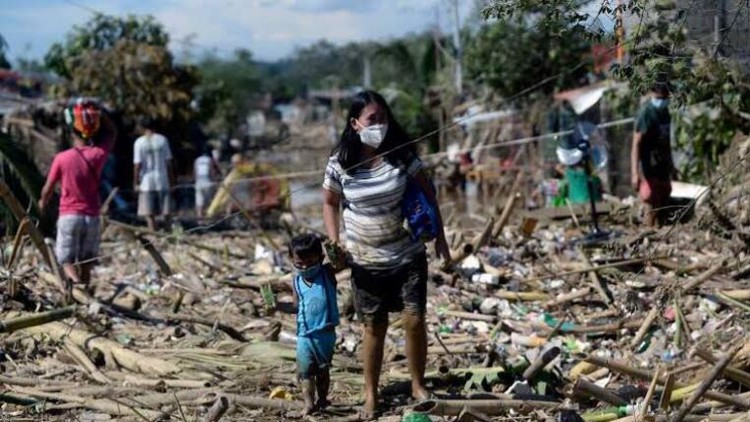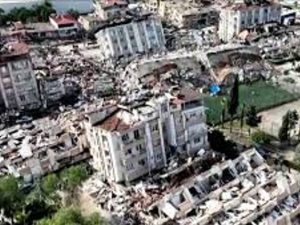Advances in Disaster Management: Principles and Practices:
- Description
- Curriculum
- FAQ
- Reviews

This course is planned in two parts. Part 1, The Science, is spread over 11 logically sequenced modules, enabling your journey to understand disasters. Module 1 is an Introduction to Disaster Management. Module 2: deals with Types of Disasters, Module 3: is about Risk Assessment and Mitigation, Module 4: discusses Advanced Risk Assessment Techniques, Module 5: deals with Disaster Preparedness, Module 6 points to Emerging Technologies in Disaster Prediction and Early Warning Systems, Module 7: talks about Disaster Response, Module 8: deals with Advanced Disaster Response Strategies, Module 9 details Recovery and Rehabilitation processes, and Module 10 is devoted to Humanitarian Assistance and Relief Operations. Additionally, a session is earmarked to discuss recent Global Reports. Part 2, The Art, is exclusively devoted to the psychosocial and humanitarian aspects of disaster management. Part 2 will be released subsequently.
The learning objectives are: Cognitive: Understanding the concept of “disaster” in its historical and contemporary context. Affective: Appreciate the power of collective action and community resilience in building a more disaster-resistant future. Behavioral: critically evaluate information related to disasters and apply technology and best practices towards developing resilient communities.
This course aims to pique your interest by using vivid imagery, relatable examples, and a sense of adventure. It sets the stage for a deeper exploration.
-
21DM L1: History of Disasters
The history of disasters spans the entirety of human civilization, shaped by a wide array of natural, environmental, and human-induced events that have left enduring imprints on societies across time. Details are discussed.
-
31 DM L2: TERMINOLOGIES: DISASTERS
The Sendai Framework Terminology on Disaster Risk Reduction promotes a common understanding and usage of disaster risk reduction concepts and to assist the disaster risk reduction efforts of authorities, practitioners, and the public. The term disaster is defined here.
-
41 DM L3: HAZARDS
A hazard is a process, phenomenon, or human activity that may cause loss of life, injury, or other health impacts, property damage, social and economic disruption, or environmental degradation. The term is discussed here citing examples.
-
51DM L4: DISASTER RISK
The term risk in the context of disasters is discussed,
-
61 DM L5: DISASTER VULNERABILITY
Vulnerability to disasters refers to the susceptibility of individuals, communities, or regions to the adverse impacts of disasters due to various socio-economic, environmental, and infrastructural factors. Let’s explore the concept of vulnerability to disasters, its underlying factors, and specific real-life examples that exemplify different facets of vulnerability in various contexts.
-
71 DM L5a: HAZARD EXPOSURE
In the complex world of disaster management, exposure plays a crucial role, akin to fuel in a fire. It refers to the location and presence of people, infrastructure, and assets in areas vulnerable to hazards. Think of it as the overlap between hazard zones and human presence.
-
81 DM L6: RISK MITIGATION
Mitigation, in the context of disaster management, refers to proactive measures taken to reduce the risks and impacts of potential hazards or disasters.
-
91 DM L7: DISASTER RESILIENCE
Resilience is multifaceted, encompassing various dimensions that contribute to a community's ability to cope with and recover from disasters: Physical, Social, Economic, environmental, etc
-
101 DM L8: RESPONSES
Responses to disasters encompass a wide array of efforts aimed at mitigating immediate impacts, providing assistance to affected populations, and facilitating recovery and reconstruction.
-
111 DM L9: DISASTER RECOVERY & REHABILITATION
Following immediate response efforts, the focus shifts towards long-term recovery, rebuilding damaged infrastructure, restoring essential services such as electricity, water, and transportation, and undertaking reconstruction initiatives to restore communities.
-
121 DM L10: DISASTER PREPAREDNESS
Disaster preparedness is the crucial act of anticipating and planning for potential emergencies, minimizing human and material losses during and after a disaster.
-
131 DM L11: EARLY WARNING SYSTEMS
Early warning systems stand as sentinels, sounding the alarm before disaster strikes, enabling communities to prepare and protect themselves.
-
141 DM L12: CAPACITY BUILDING
Capacity building is an essential component of disaster management. It refers to the process of equipping individuals, communities, and organizations with the knowledge, skills, and resources they need to prepare for, respond to, and recover from disasters.
-
151 DM L 13: RISK ADAPTATION
Disasters, both natural and man-made, have always been a part of human history. But in recent years, their frequency and intensity have increased, driven by factors like climate change, rapid urbanization, and environmental degradation. This complex reality demands a shift in our approach to disaster management, from simply reacting to events to proactively adapting to a changing world.
-
161 DM L14: DISASTER MANAGEMENT CYCLE
The disaster management cycle is a framework that outlines the four key stages of preparing for, responding to, and recovering from disasters, both natural and man-made. It's a continuous process that aims to minimize the impact of disasters on people, property, and the environment.
-
17Module 1.
Select the correct choice.
-
182 DM L0: LEARNING OBJECTIVES
Learning objectives are outlined here.
-
192 DM L1: TYPES of DISASTERS
Classification of disasters on the basis of its origin is discussed here.
-
202 DM L2: GEOLOGICAL DISASTERS
Geological disasters are explained citing relevant examples.
-
212 DM L2a: EARTHQUAKES
Earthquake as an example of geological disaster is discuused here.
-
222 DM L2 b: VOLCANIC ERUPTIONS
Volcanic eruptions, its causes and monitoring are discussed here.
-
232 DM L2c: LANDSLIDES DISASTERS
Landslide as a common case of geological disaster is discussed here.
-
242 DM L2d: TSUNAMI
Tsunami, its causes, monitoring and responses are detailed here.
-
252 DM L2 e: SINKHOLES
-
262 DM L2 f: AVALANCHE
-
272 DM L 2 g: SOIL PIPING
-
282 DM L3: METEOROLOGICAL DISASTERS
-
292 DM L3 a: CYCLONES/HURRICANES/TYPHOONS
-
302 DM L3 b: FLOODS:
-
312 DM L3 c: WILDFIRE DISASTERS
-
322 DM L3 d: DROUGHT DISASTERS
-
332 DM L 3 e: HEATWAVE DISASTERS
-
342 DM L4: TECHNOLOGICAL DISASTERS
-
352 DM L4 a: DEEPWATER HORIZON OIL SPILL
-
362 DM L4 b: CHERNOBYL NUCLEAR DISASTER
-
372 DM L4 b1: BHOPAL GAS TRAGEDY
-
382 DM L4 c: HAZARDOUS CHEMICALS: HAZCHEM CODE
-
392 DM L4 d: TREMCARD: Emergency Information at Fingertips
-
402 DM L5: BIOLOGICAL DISASTERS
-
412 DM L5 a: CoVid-19 PANDEMIC
-
422 DM L5 b: ZIKA VIRUS EPIDEMIC
-
432 DM L5 c: ZOONOTIC DISEASES
-
442 DM L6: ANTHROPOGENIC DISASTERS
-
45Module 2
Choose the correct answer from the choices.
-
463 DM L1: RISK ASSESSMENT
-
473 DM L2: METHODS of DISASTER RISK ASSESSMENT
-
483 DM L 3: RISK PREDICTION
-
493 DM L4: MITIGATION STRATEGIES
-
503 DM L5: Case Study: Japan's Seismic Resilience
-
513 DM L6: Case Study: Netherlands' Flood Risk Management
-
523 DM L7: Case Study: Bangladesh's Cyclone Preparedness Program
-
53Module 3
Choose the correct answer.
-
544 DM L0: Advanced Disaster Risk Assessment Techniques
-
554 DM L1: Probabilistic Disaster Risk Assessment:
-
564 DM L1 a: Probabilistic Hazard Modelling
-
574 DM L1b: Probabilistic Vulnerability Assessment
-
584 DM L1c: Catastrophe Risk Modeling (CRM)
-
594 DM L2: Introduction to Remote Sensing and GIS in Disaster Risk Assessment:
-
604 DM L2a: Application of Remote Sensing and GIS: Hurricane Response & Recovery
-
614 DM L2b: Case Study: NASA's Disasters Program Support to Puerto Rico
-
62Module 4
Select the most appropriate option from the choices.
-
696 DM L1: Emerging Technologies in Disaster Prediction and Early Warning Systems
-
706 DM L2: Application of AI and ML for Disaster Forecasting:
-
716 DM L3: The Google Flood Forecasting Initiative.
-
726 DM L4: Internet of Thing - Based Disaster Early Warning Systems.
-
736 DM L5: Case Study: The SHAKEALERT system in California.
-
746 DM L6: Case Study: The FIREBIRD project in Australia.








